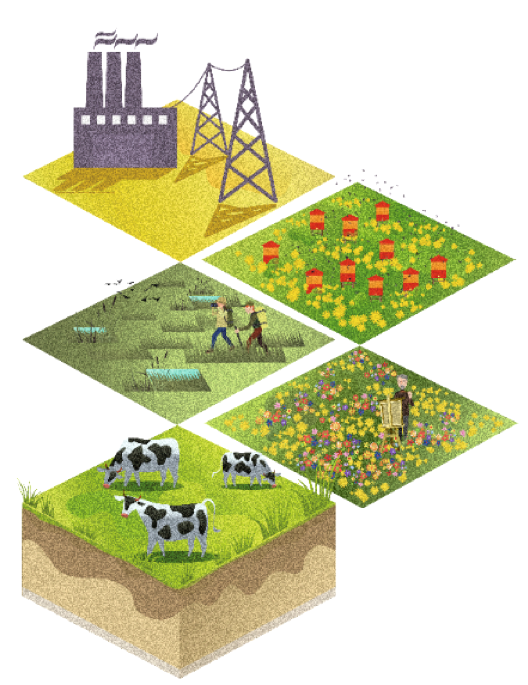The project “Integrated planning tool to ensure viability of grasslands” (acronym – LIFE Viva Grass) aimed to prevent loss of High Nature Value grasslands and increase effectiveness of semi-natural grassland management by developing the Integrating Planning Tool (Tool). The tool based on ecosystem services approach helps to strengthen linkages between social, economic, environmental, agricultural fields and policies in grassland management. Results of the tool helps planning and decision taking in sustainable grassland management.
The project also demonstrated opportunities for multifunctional use of grasslands’ ecosystem services as basis for sustainable development of rural areas.
Project actions
- Grassland ecosystem service assessment at the selected case study areas;
- Development of the Tool by addressing socio-economic matter in nature conservation policies;
- Analysis of the national policies and regulatory framework in the Baltic States;
- Development of pilot scenarios for long-term grassland management;
- Capacity building on applying the Tool for the relevant target groups and operating the Tool at national, regional, municipal, protected areas and farm level.
Project is implemented in 9 demo areas in 3 Baltic states.
Project implementation period: 06/2014 – 04/2019
Environmental problem targeted
The area covered by semi-natural grasslands has considerably decreased in Europe throughout the last century as a result of land conversion to urban territories, arable land, afforestation, while remoter or/and wet areas underwent marginalization and abandonment.
Loss of grassland biodiversity leads to degradation or even destroying of the ecosystem functions and services, which would require enormous financial investments to maintain or provide these services artificially.
Ecosystem services are divided into 3 groups [according Common International Classification of Ecosystem Services (CICES)]:

Provisioning services – hay for animal feeding, biomass for energy production, herbs for medical treatment, genetic resources;
Regulating services – water regulation, soil retention, nutrient regulation, pollination;
Cultural services – rural and urban landscape and its aesthetic qualities and cultural heritage, providing basis for recreation and tourism, as well as quality of life for living in that area;
Land abandonment has significant ecological and social consequences – the disappearance of a fine-grained mosaic landscape structure leads to its homogenization and the loss of semi-natural habitats and a consequent decrease in biodiversity value; at the same time it results in loss of traditional landscape and identity of the place.
Integrated planning is a planning approach when various different factors are taken into account.
We cannot look at the grassland ecosystem only from a nature’s viewpoint. As grasslands survive only in synergy of nature and humans, there are many factors that influence human motivation and possibilities in grassland management. Some of them usually are not fully considered but crucial to keep people in the countryside. Particularly, socioeconomic aspects are very important: demographic structure, infrastructure, availability of kindergartens and schools. At present, many younger people migrate away from the countryside due to unfavorable socioeconomic conditions; the remaining generation gets older and has no capacity to properly manage grasslands.
The integrated planning tool has been developed within the project look holistically at the processes in the countryside and help to find best grassland management solutions by taking into account both natural and socioeconomic factors of the particular site.







